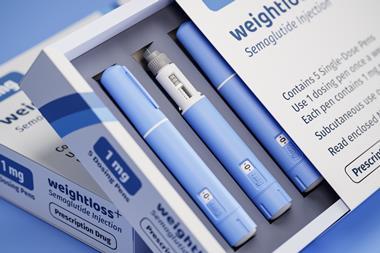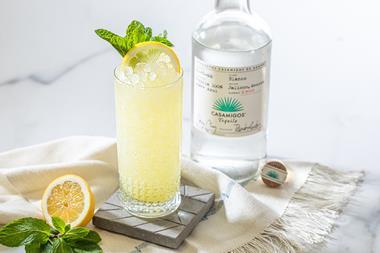Fruit is becoming more popular as part of the lunchbox mix thanks to appealing, convenient snacking options
Fruit is the second most popular item found in a lunchbox, after sandwiches. TNS says fruit is in 52% of lunchboxes, with apples the favourite [Family Food Panel, 52 w/e November 2004].
However, a survey by Cancer Research UK found that 75% of people are still not eating the recommended five portions of fruit and vegetables a day.
Recent TNS data put daily fruit and veg consumption at 2.5 portions a day. Cancer Research found that women are better than men at eating ‘5-a-day’ and good habits increase with age.
Fruit marketing company Capespan believes in starting good habits earlier and is continuing its Fruit is Cool campaign by promoting Cape apples to kids. Activity includes a nationwide radio campaign plus visits by the Cape crusaders, including a costumed ‘Arnie Apple’, to county shows throughout the country, distributing 5-a-day leaflets.
There has also been a rise in the availability of ready-prepared fruit salads and mini bags of fruit and vegetables in retailers.
However, Claire Nuttall, director of retail brands at brand agency Dragon says: “In research, mums told us that ‘healthy’ items such as carrot batons pre-chopped in bags were great, but were prohibitively expensive when they could easily chop them up themselves at home. Suppliers need to strike a fine balance between providing intrinsically healthy foods, and adding value to justify a price premium.”
A sector that is performing well is dried fruit. “Parents want their children to eat healthily, but they realise that better-for-you lunchbox foods must be appealing to children as well,” says Whitworths’ marketing director David Smith.
“That’s why we have developed a range of healthy, convenient fruit snacking options that are ideal for lunchboxes, but also have all-important classroom credibility.
“And with more consumers eating more fruit snacks more often in and out of the home, retailers should present these products as an everyday lunchbox proposition.”
Whitworths’ range includes Fruits 25g, the UK’s first fruit snack to feature the government’s 5-a-day logo, as well as its Sunny Raisin brand, both of which are aimed at children’s lunchboxes.
Meanwhile, Sundora Foods has added flavoured raisins to its Fruity Bytes range for the under-11s, as well as its Sunny Raisin brand, also aimed at children’s lunchboxes.
The orange and strawberry flavoured raisins are exclusive to the UK market. “We introduced flavoured raisins because we wanted products that would make children sit up and take notice,” says David Brewis, commercial director at Sundora Foods.
“The fruit snacking sector is extremely buoyant but it’s vital we improve choice and refresh our range in order to capture interest and stay ahead of our competitors.”
Fruit is the second most popular item found in a lunchbox, after sandwiches. TNS says fruit is in 52% of lunchboxes, with apples the favourite [Family Food Panel, 52 w/e November 2004].
However, a survey by Cancer Research UK found that 75% of people are still not eating the recommended five portions of fruit and vegetables a day.
Recent TNS data put daily fruit and veg consumption at 2.5 portions a day. Cancer Research found that women are better than men at eating ‘5-a-day’ and good habits increase with age.
Fruit marketing company Capespan believes in starting good habits earlier and is continuing its Fruit is Cool campaign by promoting Cape apples to kids. Activity includes a nationwide radio campaign plus visits by the Cape crusaders, including a costumed ‘Arnie Apple’, to county shows throughout the country, distributing 5-a-day leaflets.
There has also been a rise in the availability of ready-prepared fruit salads and mini bags of fruit and vegetables in retailers.
However, Claire Nuttall, director of retail brands at brand agency Dragon says: “In research, mums told us that ‘healthy’ items such as carrot batons pre-chopped in bags were great, but were prohibitively expensive when they could easily chop them up themselves at home. Suppliers need to strike a fine balance between providing intrinsically healthy foods, and adding value to justify a price premium.”
A sector that is performing well is dried fruit. “Parents want their children to eat healthily, but they realise that better-for-you lunchbox foods must be appealing to children as well,” says Whitworths’ marketing director David Smith.
“That’s why we have developed a range of healthy, convenient fruit snacking options that are ideal for lunchboxes, but also have all-important classroom credibility.
“And with more consumers eating more fruit snacks more often in and out of the home, retailers should present these products as an everyday lunchbox proposition.”
Whitworths’ range includes Fruits 25g, the UK’s first fruit snack to feature the government’s 5-a-day logo, as well as its Sunny Raisin brand, both of which are aimed at children’s lunchboxes.
Meanwhile, Sundora Foods has added flavoured raisins to its Fruity Bytes range for the under-11s, as well as its Sunny Raisin brand, also aimed at children’s lunchboxes.
The orange and strawberry flavoured raisins are exclusive to the UK market. “We introduced flavoured raisins because we wanted products that would make children sit up and take notice,” says David Brewis, commercial director at Sundora Foods.
“The fruit snacking sector is extremely buoyant but it’s vital we improve choice and refresh our range in order to capture interest and stay ahead of our competitors.”

















No comments yet